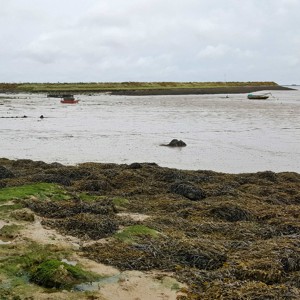
- Podcast Features
-
Monetization
-
Ads Marketplace
Join Ads Marketplace to earn through podcast sponsorships.
-
PodAds
Manage your ads with dynamic ad insertion capability.
-
Apple Podcasts Subscriptions Integration
Monetize with Apple Podcasts Subscriptions via Podbean.
-
Live Streaming
Earn rewards and recurring income from Fan Club membership.
-
Ads Marketplace
- Podbean App
-
Help and Support
-
Help Center
Get the answers and support you need.
-
Podbean Academy
Resources and guides to launch, grow, and monetize podcast.
-
Podbean Blog
Stay updated with the latest podcasting tips and trends.
-
What’s New
Check out our newest and recently released features!
-
Podcasting Smarter
Podcast interviews, best practices, and helpful tips.
-
Help Center
-
Popular Topics
-
How to Start a Podcast
The step-by-step guide to start your own podcast.
-
How to Start a Live Podcast
Create the best live podcast and engage your audience.
-
How to Monetize a Podcast
Tips on making the decision to monetize your podcast.
-
How to Promote Your Podcast
The best ways to get more eyes and ears on your podcast.
-
Podcast Advertising 101
Everything you need to know about podcast advertising.
-
Mobile Podcast Recording Guide
The ultimate guide to recording a podcast on your phone.
-
How to Use Group Recording
Steps to set up and use group recording in the Podbean app.
-
How to Start a Podcast
-
Podcasting
- Podcast Features
-
Monetization
-
Ads Marketplace
Join Ads Marketplace to earn through podcast sponsorships.
-
PodAds
Manage your ads with dynamic ad insertion capability.
-
Apple Podcasts Subscriptions Integration
Monetize with Apple Podcasts Subscriptions via Podbean.
-
Live Streaming
Earn rewards and recurring income from Fan Club membership.
-
Ads Marketplace
- Podbean App
- Advertisers
- Enterprise
- Pricing
-
Resources
-
Help and Support
-
Help Center
Get the answers and support you need.
-
Podbean Academy
Resources and guides to launch, grow, and monetize podcast.
-
Podbean Blog
Stay updated with the latest podcasting tips and trends.
-
What’s New
Check out our newest and recently released features!
-
Podcasting Smarter
Podcast interviews, best practices, and helpful tips.
-
Help Center
-
Popular Topics
-
How to Start a Podcast
The step-by-step guide to start your own podcast.
-
How to Start a Live Podcast
Create the best live podcast and engage your audience.
-
How to Monetize a Podcast
Tips on making the decision to monetize your podcast.
-
How to Promote Your Podcast
The best ways to get more eyes and ears on your podcast.
-
Podcast Advertising 101
Everything you need to know about podcast advertising.
-
Mobile Podcast Recording Guide
The ultimate guide to recording a podcast on your phone.
-
How to Use Group Recording
Steps to set up and use group recording in the Podbean app.
-
How to Start a Podcast
-
Help and Support
- Discover

When we set up to record, there were no signs of the weather front. It was late evening. Low tide. We'd followed the path East along the river out of Burnham-on-Crouch and come across a Second World War armament, a pillbox, overgrown and derelict, beside the footpath. A lookout, that now, and for the last seventy years, has looked and been looking out on nothing more than the to and fro of the tides. Further along we saw a railing sloping steeply down the seawall, and into the water.
Gripping onto the railing not to slip, we climbed down. In places the seawall was covered in a fine moss, and felt velvety under foot. Where the rough shrubs and grasses gave way to bare concrete, marked the high tide line. The sky had filled with dusk, and we stopped, to listen. It's the sound-check, the audition, before we can commit the kit. A silent minute, that lets us hear the world far beyond ourselves. Slowly, the main flow of the river's outer edge was revealed through countless thousands of swirling eddies. In the mile wide body of air above, the ding ding dings of redshank, the rasping calls of hardy gulls. It was a good, panoramic place to record, and a scene somehow also shaped by not a sound, but an absorbent mass, the low lying effect of Wallasea Island, far off over the opposite bank, with not a light in sight.
To make the 12 hour recording, we spent the night in an Inn, half a mile up-river from the microphones. In the dead of night we could hear the yacht masts ringing in the wind, and the rain battering against the window panes, and wondered. What will it be like down at the seawall? Had we gauged the high tide mark right? Will the fluffy hat that we stretched over the kit box stand up to the pelting rain?
This is the section of the recording from between 7am and 8am. rain clouds are still passing overhead, their precipitations sifting down like tiny fragments of grit on the rising water, and as it gets heavy, hammering on the lid of the mic box. Seabirds are all around, mainly in the distance, between the gusts of wind, but sometimes they swoop by very close. Someone passes, up early and on foot, with their scampering dog. A few planes traverse, softly reverberating through the full width of the sky above Wallasea Island. The hat that we used to help baffle against the constant esturary wind is by now wringing wet, and the wooden box protecting the kit is too, though luckily not inside. What the mics manage to capture though, despite the drenched state of the equipment, is the essence of this wild landscape around the River Crouch, as another blustery day begins.
More Episodes
 2025-07-03
2025-07-03
 922
922
 2025-06-25
2025-06-25
 1.1k
1.1k
 2025-06-16
2025-06-16
 1.1k
1.1k
 2025-06-04
2025-06-04
 1.3k
1.3k
 2025-05-15
2025-05-15
 1.4k
1.4k
 2025-05-07
2025-05-07
 1.5k
1.5k
 2025-04-29
2025-04-29
 1.5k
1.5k
 2025-04-21
2025-04-21
 1.9k
1.9k
 2025-04-13
2025-04-13
 2.0k
2.0k
 2025-03-29
2025-03-29
 1.9k
1.9k
 2025-03-24
2025-03-24
 1.8k
1.8k
 2025-03-17
2025-03-17
 1.5k
1.5k
 2025-03-09
2025-03-09
 1.9k
1.9k
 2025-03-01
2025-03-01
 2.0k
2.0k
 2025-02-15
2025-02-15
 2.0k
2.0k
 2025-02-07
2025-02-07
 1.7k
1.7k
 2025-01-31
2025-01-31
 2.3k
2.3k
Create your
podcast in
minutes
- Full-featured podcast site
- Unlimited storage and bandwidth
- Comprehensive podcast stats
- Distribute to Apple Podcasts, Spotify, and more
- Make money with your podcast
It is Free
- Privacy Policy
- Cookie Policy
- Terms of Use
- Consent Preferences
- Copyright © 2015-2025 Podbean.com




